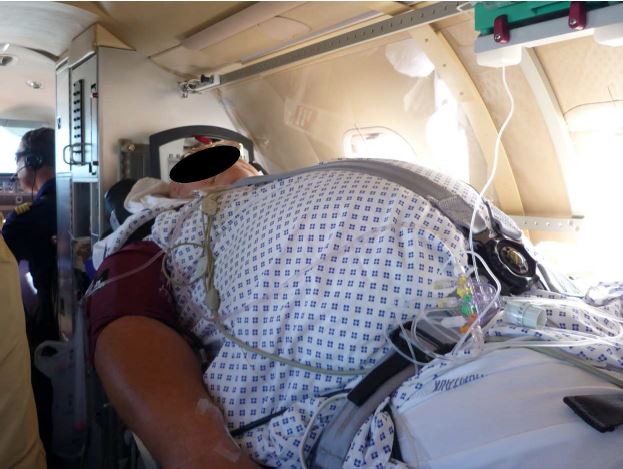
The risks of transporting an overweight patient by helicopter
The same challenges that have to be faced when an overweight patient, with a body-mass index of over 35, has to be moved and transported by ambulance, also have to be met every time a helicopter has to be used for transportation.
Before starting transportation procedures, the patient’s physical characteristics have to be assessed to decide if he or she is fit for flying. The first thing to be assessed is the means of transportation, which has to meet certain fundamental standards. Suitable medical staff should be available on the flight. Continuous positive airway pressure (CPAP) nasal masks must be available in the right size for the overweight patient.
Everything has to be designed specifically for the overweight patient’s needs, from the stretcher, which must be long enough and able to carry the weight, to the blood pressure sleeve, from pulse rate readers to splints and anything that may not be the right size for such large patients.
No standard sizes are currently planned for this type of passenger; in European helicopters, for emergency medical service (HEMS), the patient is laid diagonally and the shoulder-to-hip diameter limit on Learjet 45 aircraft used by the European Air Ambulance (EAA) is 73 cm. The load capacity and restraint belts of a stretcher are limited to 200 kg. The Learjet 35 restrictions have the same parameters, but at this point, transportation can become problematic.
A typical overweight patient has a higher base metabolic rate (BMR) with higher oxygen consumption, which makes a seated position preferable for easier breathing. Every detail has to be taken into account in good time and every individual patient’s requirements must always be considered.


